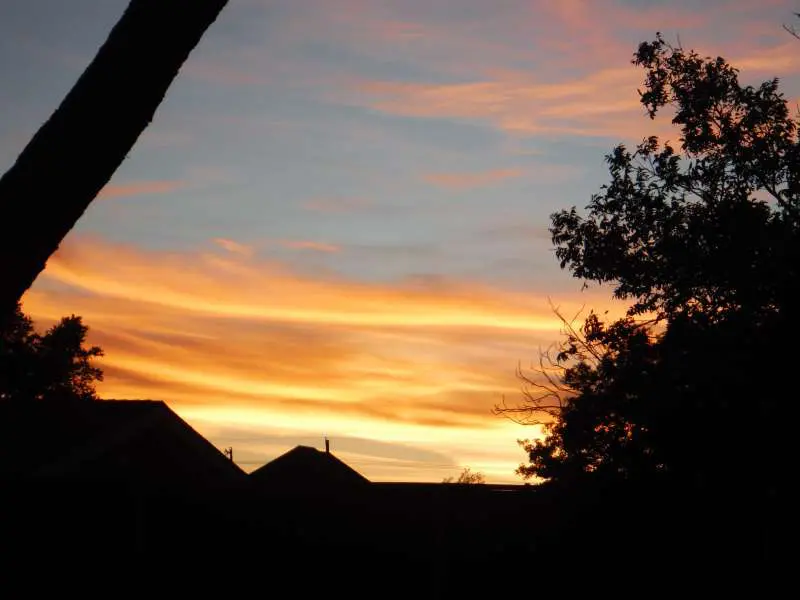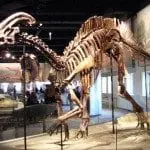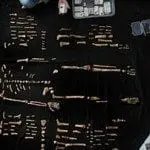The setting sun lit up western clouds in fiery reds and oranges, contrasting beautifully with the deepening blue of the surrounding sky. A soft September breeze rippled through my loose hair as I slowly walked onward, quietly contemplating the things I saw around me: the tall and elegant curtains in the middle of a barren, empty lot; the small scrap of pure white fabric in my hand; the piece of wood I had watched burn after throwing it into the fire; the brass basin of water . . . A couple of weeks ago, there was a traveling life-sized replica of the Biblical wilderness tabernacle (the one that God instructed Moses to build) visiting my area* that I saw.
As I walked through the replica, feeling the sandy soil around my flip-flops I couldn’t help but wonder if this was a little like what walking in the “outer courts” would have been like for the Israelites as they wandered through the desert. The farther I went into the tabernacle replica, the farther back in time my thoughts went – not just to the stories of Moses and the Israelites, but all the way back to the very first people, Adam and Eve in the Garden of Eden. The “Holiest of Holies” was the core of the tabernacle because it was where the Ark of the Covenant – the presence of God – stayed, close to where the people camped, but with respectful boundaries.
What does the presence of God in the “Holiest of Holies” have to do with Adam and Eve? Adam and Eve were created to have a real, personal relationship with God, loving Him, being loved by Him, glorifying Him, and living with Him. When you love someone, you (generally) want to be around that person and you want to know what’s going on in his or her life – even the little details about daily struggles or funny things that happened that day. The same is true with God. He wants to walk through the day with us and He wants us to converse with Him. But, there’s a big, nasty problem that comes between an individual person and God – sin.
The point of the Bible is not really to give us “three simple steps for not going to Hell”, but to guide us on how to have that real, intimate relationship with God (being in the “Holiest of Holies”) that we were created to have. Following rules doesn’t make a relationship – rather, the desire to obey flows from a relationship of love and respect.
“This is the covenant I will make with the people of Israel after that time,” declares the Lord. “I will put my law in their minds and write it on their hearts. I will be their God, and they will be my people” ~Jeremiah 31:33 (see also Heb. 10:16)
In our sin-corrupted world, there are sometimes things that make us hesitate at entering into the “Holiest of Holies” through the veil that was torn when Christ was crucified. Sometimes entering into the holy Presence of our all-powerful Creator can be a scary thought – I’ll occasionally find myself wondering, “What crazy thing is He going to ask me to do next?” Often, our hesitations are rooted in a lack of trust. Just as Eve was deceived in the Garden, all of us probably have or will at some point be deceived and get our trust betrayed. While forgiveness can be hard, restoring trust after having been lied to is an entirely different challenge, making it easy to feel like we can’t trust anyone – even God. But, boiling it down logically, you have to trust someone, and since you can’t trust yourself (the heart is deceitful and desperately wicked) or others, the most reasonable thing to do is trust God. Don’t hesitate – enter into the “Holiest of Holies” and dwell in the Presence of God each moment of every day!
“Therefore, brethren, having boldness to enter the Holiest by the blood of Jesus, by a new and living way which He consecrated for us, through the veil, that is, His flesh . . . let us draw near with a true heart in full assurance of faith, having our hearts sprinkled from an evil conscience and our bodies washed with pure water.” Hebrew 10:19-22 (NKJV)
*This was the “Tabernacle Experience” – more information about this and where all it travels at: http://tabernacleexperience.com/
Copyright Sara J. Bruegel, September 2015






